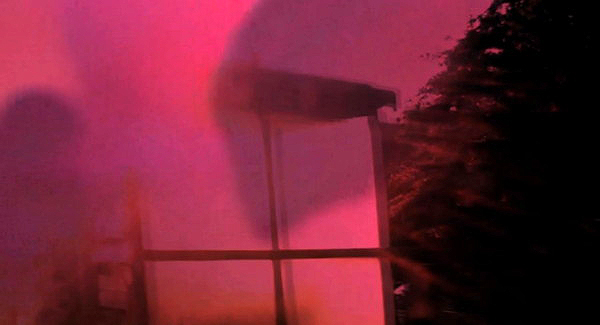
Movies are no longer simple to define. Their boundaries are warping, changing and expanding without end.
Today, nearly everyone has a camera and their handiwork is accessible to the masses. Some might use a digital SLR to film still paintings in a museum, documenting inanimate objects in real time. Others might make a film with their Smartphones, recording the activities of their household pets and uploading them to YouTube, for example. One way or another, it can all be classified as video art.
“Someone’s cat video can be seen by 10 million people. And that cat video is often more interesting and inventive than what artists are doing with the medium,” filmmaker Joe Nanashe wrote in an email earlier this month. “Videos go viral, which of course is a concept that William S. Burroughs championed. Knowledge, information, images are viruses. And, in 2013, we were all infected.”
It is a movement that refuses be ignored. As movie-making evolves, so does its meaning, according to Parrish Art Museum Curator of Special Projects Andrea Grover, who organized “As the Eye is Formed,” a screening to be co-presented by the Hamptons International Film Festival on Friday, March 29. The event will feature short projects from 14 of New York’s most cutting-edge filmmakers—Mr. Nanashe among them—selected by one of video art’s original boundary-breakers himself: Peter Campus.
Regarded as a central figure in video art, Mr. Campus pioneered the use of single-channel videotapes and closed-circuit video cameras as an art form in the early 1970s. Today, his more recent work explores highly pixilated landscapes on flat-panel video screens, as seen in “Passage at Bellport Harbor,” which is currently on view at the Water Mill-based museum.
Over the course of two weeks, the sole juror narrowed down 80 entries to 20 by watching all of the videos twice—on separate days and in a different order, the East Patchogue resident explained in an email earlier this month—and then made his final decision.
Some of the videos are quite simple, he said, while others are extremely sophisticated. Yet at the core of each are the newest tools of art making, expression without “pomp or pretension,” he said, and, above all, truth.
“Before video, there was underground film,” Mr. Campus said. “I don’t have much professional interest in commercial cinema, other than as relaxation. My interest in video has been for 45 years. The technology has improved to the greatest extent, and with it the types of videos, too.”
Still, filmmakers are looking to the past for inspiration, including Alexandra Momin, though heightened technology allows her to break away from a big budget and run wild with her ideas. Last year, she filmed her nearly 9-minute video, “Breathe,” on the Lower East Side and layered it with paintings, which add color and texture, she said.
“I love the meeting of digital and analog,” she explained, “creating something different from old and new techniques.”
She was inspired by the city, Ms. Momin said during a recent email interview. How lonely it can feel, despite the thousands of people, juxtaposed by the calming nature of chaos.
“New York is one of my favorite cities and I’m constantly in awe of how rhythmic and meditative the fast-paced energy can feel,” she said. “I composite layers of video at varying speeds to explore the moments our eye doesn’t always catch.”
Ordinary slices of life fascinate filmmaker Sheri Wills, who uses low-tech equipment to capture beauty in the seemingly average. She shot “Scene Box” with an inexpensive flip camera, though the image processing and editing required expensive software and a fast computer, she explained in an email earlier this month.
“I was interested in working into the piece the fantastical and magical wonder you find in early, hand-painted cinema,” she said. “I wanted to create a landscape comprised of both the imagination and the senses.”
Three selected videos from Ahmet Civelek—“Father/Smile,” “Fedele” and “Self Portrait,” which is a tribute to Chinese contemporary artist Ai Weiwei—are slightly more straightforward. Shot head on, the films use Mr. Civelek’s subjects, as well as himself, to redefine destruction.
“We do destruction on a daily basis,” Mr. Civelek explained during a telephone interview last week. “For example, whenever we go to the supermarket, whatever we get, we have to destroy the packaging to get to the actual object. I like to bring out the primitive side of things and induce a visual aspect of it, too.”
Filmmaker David Galbraith draws from the relationship between sound and image—seen, most commercially, in the iTunes music visualizer, he explained during an email exchange earlier this month. In 2011, he created “KenKen GS,” a computer-based video and sound installation generated in real time by Mr. Galbraith’s custom-designed software.
“[Peter Campus] is the main reason I chose to submit to the open call for ‘As the Eye is Formed,’” Mr. Galbraith said. “I think this is a great time for cinema. And a great time for change.”
“As the Eye is Formed” will screen on Friday, March 29, at 6 p.m. at the Parrish Art Museum in Water Mill. Tickets are $10 and free for members, children under 18 and students with ID. For more information, call 283-7006 or visit parrishart.org.